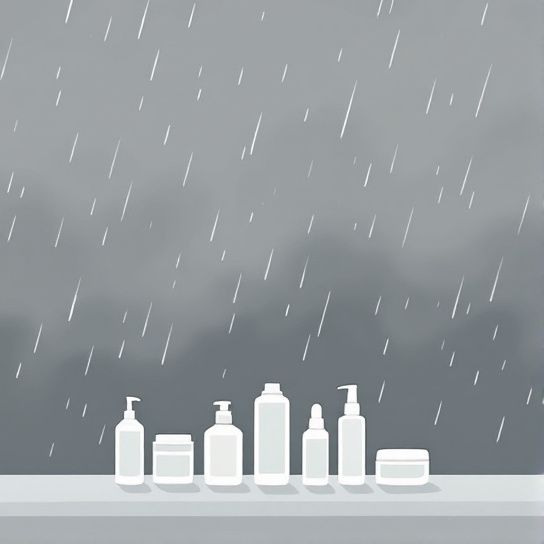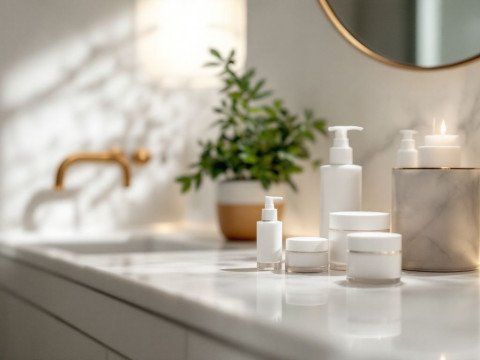Ah, the tiny house life! It’s all about minimalism, freedom, and simplicity. Tiny homes are compact living dreams come true, offering people a chance to declutter and downsize, literally and metaphorically. But with perks, come some quirks, right? Imagine waking up to a serene morning in your quaint, cozy abode only to find that your skin doesn’t agree with your lifestyle choice, thanks to climate acne.
Yes, you read that right. **Climate acne** is a real thing. It might sound like one of those buzzwords, but it has a traitorous way of sneaking into tiny homes. Living in confined spaces can magnify climate-related skin issues, and dealing with it can sometimes feel like trial and error. Luckily, I have some skin solutions that suit your minimalist lifestyle while tending to this sneaky skin trouble.
Let’s dive into why climate acne is showing up and what we can do about it within the unique environment of our beloved tiny homes.
Understanding Climate Acne In Tiny Living
**Climate acne** arises because different climates—humid, dry, cold, hot—you name it, they all affect the skin in unique ways. And when you’re confined to a smaller space, how you ventilate, control humidity, and handle temperature becomes critical. I mean, there’s nowhere to hide when cozy and contained feels… sticky.
The Problem: Space and Environment
Tiny homes, by design, are about striking the perfect balance between comfort and compact living. Yet, their size means every little environmental change can impact you more noticeably, including your skin. Changes indoors, like fluctuating temperature control or inadequate ventilation, can be kindling for climate acne.
Cold Climate Scenarios
Cold weather tends to sap every ounce of moisture from your skin, leaving it dry, and often irritated. A tiny house with a heated interior can mimic this dryness, especially if there’s a lack of proper air circulation. And dry skin can be a culprit behind annoying acne due to clogged pores and overproduction of sebum.

Humid and Warm Conditions
On the flip side, bear with me, because warm climates or poor ventilation can lead to excessive humidity inside your little cocoon. This excess moisture triggers sweat and oil build-up, making your skin an unwitting target for pesky breakouts.
A Compact Living Dilemma
When we talk about minimalism in tiny homes, it’s about less clutter but also fewer toxins—toxins from everyday items that slowly build up in closed spaces. Add indoor pollution to the mix, like cooking fumes or cleaning products, and you have another skin challenge coming your way.
Crafting Solutions in the Small Space
It’s not all doom and gloom; solving these issues is quite doable. With some deliberate, tiny adjustments, your skin can adapt beautifully. Try these tips and ingredients that align with a minimalist spirit and are easy to implement.
Skincare Simplicity
Maintain a simple but effective skincare routine—not more than 3 or 4 steps. Trust me, a less-is-more approach perfectly snug in a small home lifestyle can do wonders for your skin.
Clean It Right
Invest in a gentle facial cleanser—something unscented, with a neutral pH. Try not to go on an exfoliation overdrive; twice a week is sufficient, maintaining balance without aggravating acne through irritation.
Moisturize Smart

Choose a lightweight yet potent moisturizer. Something oil-free and non-comedogenic (that’s a fancy word for won’t clog pores). Remember, serums can work wonders, adding a touch of nourishment without any greasy footprint.
Sun Protection Year-Round
Don’t let closed walls fool you; even indirect sunlight requires SPF commitment! Opt for a broad-spectrum sunscreen that replicates that “doesn’t feel like it’s there” kind of magic.
Environment Control Within Tiny Walls
Since climate plays a significant role, let’s look at your home’s environment. Optimizing your microclimate is about getting just the right blend of humidity and freshness.
Ventilate Like a Pro
Air circulation is non-negotiable. Use windows and portable fans strategically to bring in fresh air and reduce humidity. A mini air purifier that fits your compact living space can also remove skin-irritating pollutants.
Tackle the Humidity
Maintain appropriate humidity levels using a small hygrometer to track moisture levels. For too-frequent humidity spikes, a small dehumidifier can be a godsend, pulling excess moisture out.
Minimalist Shouldn’t Mean Minimal Care
Your possessions are fewer but meaningful. Treat your skin the same way. Purge unnecessary which often irritates the skin over time and strip to essentials, focusing on quality over quantity.

- Consider Replacing Sulfate-Loaded Products
- Go for Eco-Friendly Detergents
- Store Natural Essentials (Aloe Vera gel over artificial tinkture)
Sure it’s cliché, but drinking enough water matters! Make it a habit, maybe while strolling in nature, enjoying your small home’s idyllic setting.
Battle with Stress
In tiny home living, mindfulness and lifestyle elements like yoga and simple exercise can fit! Stress and acne are collaborators, so integrate calming practices into your routine. Routine cleaning can turn into a Zen meditation ritual. Neat, isn’t it?
Tiny House Community’s Tip Sheet
Community spirit echoes loud in compact living circles. Exchange bits of wisdom over coffee—or, say, at a shared community workshop. Some tips may just hit the mark.
- Go Natural: Swapping to wooden utensils reduced cracking skin for some.
- Plant Haven: Houseplants like Peace Lilies aren’t just aesthetic––they combat air pollution too.
- Essential Oil Dampers: Pairing essential oil with water makes for a fragrant, acne-soothing atmosphere minus hefty cost.
Embrace Your Beautiful, Small Living Skin
In the grand scheme, loving your skin while nurturing your tiny home lifestyle makes these tried and true tactics worth every effort. Even while space may be scant, pursuing comfort for both you and your skin isn’t a lot to ask. It’s your castle, your refuge.
Trust me, I get it—adapting tiny home living with the whims of climate acne isn’t a sprint; it’s a paced journey. But with subtle shifts in your climate and best skincare practices built for minimal life, it’s completely doable.
There you have it! Not too much fuss, yet results hopeful enough to hold you tight within cozy close walls, glowing skin in tow.
Frequently Asked Questions
How does climate and weather affect acne?
Climate and weather can significantly impact acne. In hot and humid climates, increased sweat production can lead to clogged pores, creating an environment conducive to acne. Conversely, cold and dry climates can cause the skin to produce more oil to compensate for the dryness, also leading to clogged pores. Additionally, seasonal changes, such as increased sun exposure in summer and reduced vitamin D in winter, can exacerbate acne[2][4][5>.
What role does air pollution play in acne development?
Air pollution, including particulate matter, heavy metals, and volatile organic compounds (VOCs), can exacerbate acne by triggering inflammation, oxidative stress, and disrupting the skin barrier function. These pollutants can penetrate the skin, leading to clogged pores and increased sebum production, which are key factors in acne development[1][5).
How does sun exposure impact acne?
Prolonged sun exposure can worsen acne by causing oxidative stress and damage to the skin. UV radiation increases the shedding of dead skin cells, leading to plugged pores and potentially causing blackheads, whiteheads, and pimples. It also increases the risk of skin cancer and can induce inflammation and hyperpigmentation[1][4][5).
What skincare strategies can help mitigate the effects of climate on acne?
To mitigate the effects of climate on acne, it is essential to maintain a diligent skincare routine. This includes using gentle yet effective cleansers, non-comedogenic moisturizers, and sun-protective measures like broad-spectrum sunscreen. Incorporating antioxidants and anti-inflammatory ingredients, such as vitamin C, E, niacinamide, and aloe vera, can also help reduce inflammation and oxidative stress caused by environmental factors[1][2][5).
References










